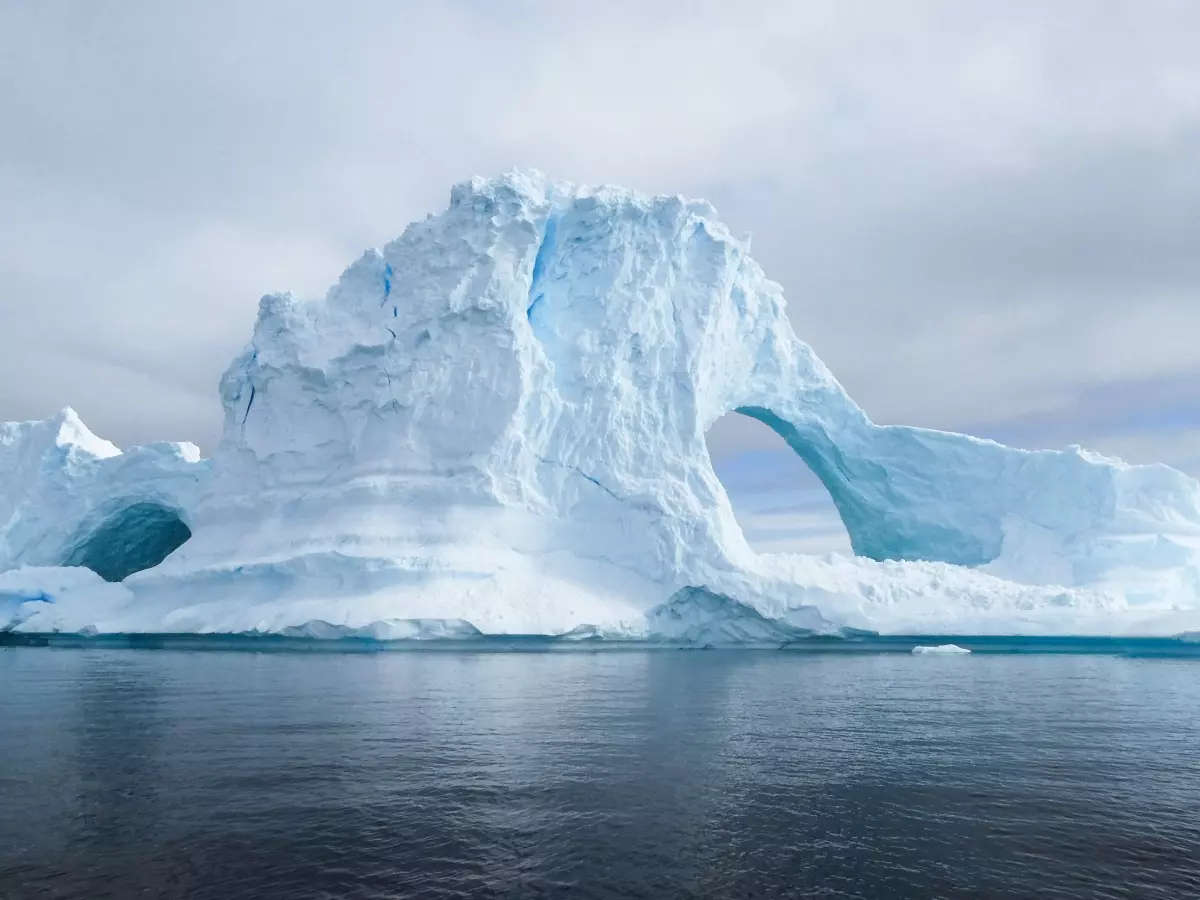Explained: What The Water Discovered Behind A Thick Covering Of Ice In Antarctica Means
Matthew Siegfried of the Colorado School of Mines and Chloe Gustafson of the Scripps Institution of Oceanography spent 61 days in tents on an Antarctic ice stream collecting data about the terrain beneath half a mile of ice beneath their feet.

Matthew Siegfried of the Colorado School of Mines and Chloe Gustafson of the Scripps Institution of Oceanography spent 61 days in tents on an Antarctic ice stream collecting data about the terrain beneath half a mile of ice beneath their feet. The researchers discovered a deep groundwater system in the sediments below the Antarctic ice sheets. They had discovered hundreds of interconnected liquid lakes and rivers cradled within the ice itself.
The research team observed: "The amount of groundwater we found was so significant, it likely influences ice-stream processes." "Now we have to find out more and figure out how to incorporate that into models." They noted that this discovery helps us understand that the West Antarctic was an ocean before it became an ice sheet. It would again be an ocean with a collection of islands if it vanished today.
The new method of Discovery
For decades, scientists have used radars and other tools to image the underlying features beneath the Antarctic ice sheet. These missions have found sedimentary basins sandwiched between ice and bedrock, which have the ability to hold groundwater because of their porous properties.
 Unsplash/Representational image
Unsplash/Representational image
However, airborne geophysics can only disclose the basic outlines of such objects, not their water content or other properties. The researchers, on the contrary, utilised a technique known as magnetotelluric imaging. The technique analyses the amount of natural electromagnetic energy that penetrates the earth's atmosphere.
Researchers may generate MRI-like maps of the different elements by measuring the changes in how ice, sediments, fresh water, salty water, and bedrock conduct electromagnetic radiation. The crew placed their equipment in snow trenches for a day or two at a time, then dug them out and repositioned them, finally obtaining readings at more than four dozen different locations.
What does this finding imply?
 Unsplash/Representational image
Unsplash/Representational image
The researchers' findings show that this groundwater is the largest liquid water reservoir beneath the ice stream, and that it may be influencing how the ice moves on Antarctica. The amount of liquid water in an ice stream determines how rapidly it flows. If there¡¯s liquid water at the base of an ice stream, the ice flows fast. The ice halts if the water freezes or the base dries out. In a commentary, Winnie Chu, an assistant professor at the Georgia Institute of Technology, wrote, "This finding highlights groundwater hydrology as a potentially critical piece in understanding the effect of water flow on Antarctic ice sheet dynamics."
But what could be the purpose of understanding the flow of ice? Gustafson, the researcher, says, "Ultimately, we want to understand how quickly that ice is going to flow off the continent into the ocean and affect that sea level rise." The discovery of groundwater under the ice sheets of Antarctica therefore has a bearing on climate change.
What else could be present in groundwater?
 Unsplash/Representational image
Unsplash/Representational image
The researchers stated that every time they drilled a hole in Antarctica, it was teeming with microbes. They affirm with certainty that there's no reason to believe that bacteria aren't consuming nutrients in the groundwater as well. When one has microbial ecosystems that have been cut off for long periods of time¡ªin this case, seawater was likely deposited there 5,000¨C10,000 years ago¡ªthe researchers begin to get a very good idea of how life might survive on other planets trapped beneath thick ice.
The discovery of groundwater could have a significant impact on our understanding of not only how Antarctica responds to climate change but also what types of strange species dwell beneath its ice shelves.
References
Crane, L. (2022, May 5). Vast reservoir of water discovered under the ice in Antarctica. New Scientist. Retrieved May 16, 2022, from newscientist
Gustafson, C., & Seifert, M. (2022, May 5). In sediments below Antarctic ice, scientists discover a giant groundwater system. Phys.org. Retrieved May 16, 2022, from phys
Siegfried, M., & Gustafson, C. (2022, May 5). Scientists in Antarctica discover a vast, salty groundwater system under the ice sheet ¨C with implications for sea level rise. The Conversation. Retrieved May 16, 2022, from theconversation